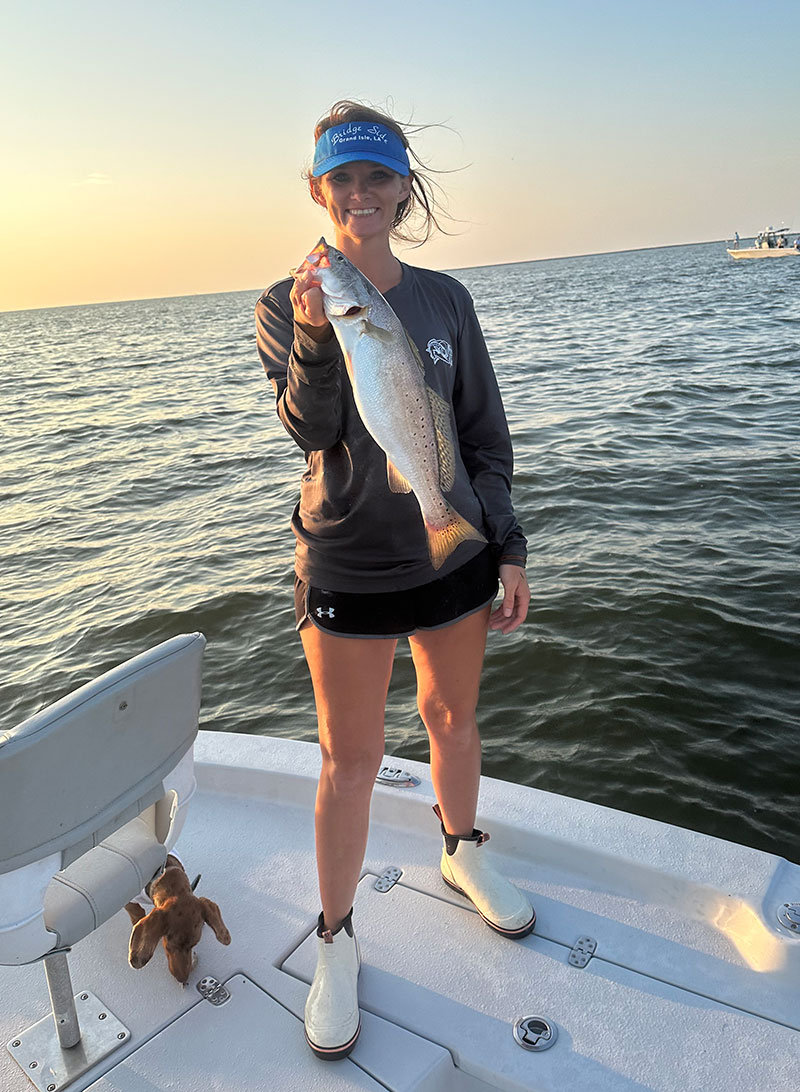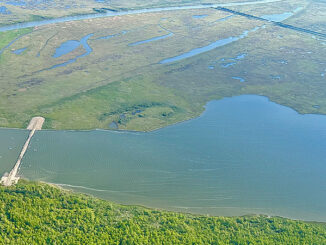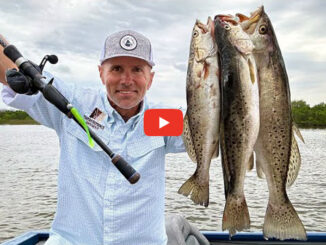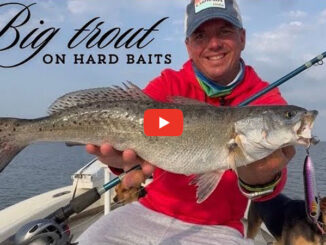
So, maybe, hopefully, there’s light at the end of the tunnel.
It’s a long tunnel — four years long to be exact — and, in the first week of August, it appears we’re getting close to a resolution on new speckled trout regulations, maybe.
Quickly, the new proposed rules include:
- A 13-20 inch “slot” limit;
- A 15-fish daily creel limit (and ask why, in the last years, have fisheries biologists decided to call it a “bag” limit, when that term generally is applied to wildlife, not fish);
- An allowance of two specks measuring longer than 20 inches in a day’s catch;
- And, charterboat skippers and their crews will not be allowed to keep fish when on a chartered trip.
Some proposal
That’s a different approach than any offered before, unless we can go back to our Wildlife and Fisheries Commission’s offering of that exact proposal made at its July meeting by commission member Brandon DeCuir. That move was voted down.
One month later, it drew four yeas and two nays; the “no” votes coming from commission members Joe McPherson and Al Sunseri.
Note here, McPherson offered a 12-18 inches “slot,” a 15-fish daily creel with an allowance for two trout longer than 18 inches and no charterboat catch.
McPherson argued his proposal would meet the five-year recovery plan which state biologists sought in their initial presentation more than two years ago.
The recovery is based on a 20-percent reduction in the overall catch.
Wildlife and Fisheries marine biologist Jason Adriance said DeCuir’s offering would lead to a six-year recovery of the species.
July’s initial proposal included, a 12-19 inches “slot,” an allowance of two trout over 19 inches; a 15-trout daily limit; the elimination of the charterboat captains/crew catch (but wording allowing “…captains and crew to engage in fishing in order to demonstrate fishing for (their) clients or ‘start the bite;’” and, a four-year sunset to end proposed regulations Jan. 1, 2028, thereby mandating a new stock assessment at the commission’s April, 2027 meeting.
Clear the way?
Does any, or all, of this clear away the clouds surrounding the most significant coastal fisheries reduction in more than 20 years?
Hardly.
Does any, or all, of this mean we can expect a sustainable speckled trout stock before 2030?
Maybe.
What needs to happen, first, is all Louisiana fishermen need to accept the fact we no longer can measure our speckled trout catches by how many “boxes” (ice chests) we bring home from a trout trip.
That’s in the past.
What’s more in this mix of “we want,” is there are too many variables to be 100-percent sure reduced size and reduced creels will lead us to the promised land.
Habitat loss is a major factor. So is the continued damage caused by the commercial menhaden catch. Add in hurricanes and the occasional wintertime freeze, and, heaven forbid, a massive oil spill, and any recreational fishing changes suddenly become minor factors.
Still, the increase in recreational fishing pressure during the last 20 years is something state Wildlife and Fisheries staff can control, of course, through the Wildlife and Fisheries Commission.
And these new regulations can do that, but can this proposal garner the support from enough recreational fishermen when it comes passing muster with legislative oversight?
The State Senate and House Natural Resources committees used its oversight powers to turn aside 2022’s original 13.5-inch, 15-trout-a-day regulation, a move that plopped the issue squarely in the commission’s lap earlier this year.
McPherson questioned the new 13-20 inch part, because, he said, it appeared the state legislators didn’t like the 13.5-inch minimum size.
Fly in the ointment
DeCuir countered the half-inch was the fly in this balm, and believed 13-20 inches would satisfy the masses.
Lost in August’s discussion was a call for basin-by-basin management plan, a project commission member Kevin Segrera said he questioned because the agency’s marine biologists and managers appeared to be unsure of where basin management could be effective.
That’s because the entire discussion was based on statewide trout management goals, and was the case since the issue of speckled trout reductions were posed four years ago.
Commission chair Andrew Blanchard offered that basin-by-basin plan in July after fishermen targeting east-of-the-Mississippi River trout said their catch included many more than two trout longer than 19 inches.
When it appeared basin management was moving too fast, to Blanchard’s credit, he said he told the other six commission members the issue would be resolved in August: “We’re not kicking this can down the road anymore,” Blanchard said.
So what’s next?
The proposed 13-20 inches “slot” and all the other new regs will be discussed — possibly cussed — during a 10 a.m., Sept. 21 public comment session set for the first floor meeting room at state Wildlife and Fisheries headquarters, in Baton Rouge.
After that, the joint Natural Resources committees will have 30 days for oversight. If the legislators turn aside the proposal, then Gov. John Edwards has the power to turn aside the legislators’ decision.
If all goes forward, then the new regulations will take effect in the middle of December.


